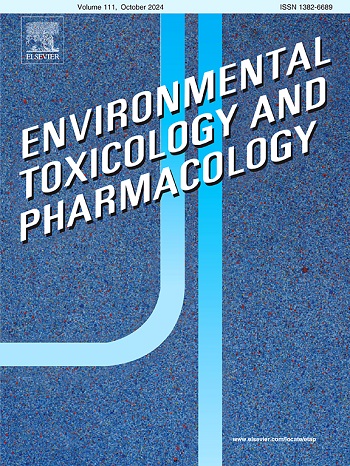越南常用农业杀虫剂对四种蜜蜂(膜翅目:蜂科)的毒性比较。
IF 4.2
3区 环境科学与生态学
Q2 ENVIRONMENTAL SCIENCES
引用次数: 0
摘要
养蜂生产蜂蜜是越南一项重要的经济活动,对该国的农业出口和扶贫做出了重大贡献。然而,农药的广泛使用,加上监管不足,给该行业带来了严重挑战,并威胁到蜜蜂的健康。本研究研究了五种常用的农业杀虫剂,包括联苯菊酯、吡虫啉、噻虫啉、噻虫嗪和氯虫腈,对越南常见的四种蜜蜂:亚洲蜜蜂(Apis cerana)、欧洲蜜蜂(A. mellifera)、巨型蜜蜂(A. dorsata)和侏儒蜜蜂(A. florea)的口服毒性。我们的研究结果表明,杀虫剂和蜜蜂物种之间的毒性存在显著差异,管理物种A. cerana对所有测试的杀虫剂表现出最高的耐受性。野生种A. dorsata和A. florea的敏感性明显高于野生种。这些发现强调了制定农药风险评估和改进农药法规的必要性,这些法规应考虑到对蜜蜂以外的更广泛的蜜蜂物种的影响。本文章由计算机程序翻译,如有差异,请以英文原文为准。
Comparative toxicities of commonly used agricultural insecticides to four honey bee species (Hymenoptera: Apidae) in Vietnam
Beekeeping for honey production is a vital economic activity in Vietnam, significantly contributing to the nation's agricultural exports and poverty alleviation. However, the widespread use of pesticides, compounded by insufficient regulations, poses serious challenges to the industry and threatens bee health. This study examined the oral toxicities of five commonly used agricultural insecticides including bifenthrin, imidacloprid, thiacloprid, thiamethoxam, and chlorantraniliprole, on four honey bee species prevalent in Vietnam: the Asian honey bee (Apis cerana), the European honey bee (A. mellifera), the giant honey bee (A. dorsata), and the red dwarf honey bee (A. florea). Our results indicated significant variability in toxicity among the pesticides and honey bee species, with the managed species A. cerana showing the highest tolerance across all tested insecticides. In contrast, the wild species A. dorsata and A. florea were significantly more sensitive. These findings highlight the need to develop a pesticide risk assessment and improve pesticide regulations that consider the impacts on a broader range of honey bee species beyond A. mellifera.
求助全文
通过发布文献求助,成功后即可免费获取论文全文。
去求助
来源期刊
CiteScore
7.00
自引率
4.70%
发文量
185
审稿时长
34 days
期刊介绍:
Environmental Toxicology and Pharmacology publishes the results of studies concerning toxic and pharmacological effects of (human and veterinary) drugs and of environmental contaminants in animals and man.
Areas of special interest are: molecular mechanisms of toxicity, biotransformation and toxicokinetics (including toxicokinetic modelling), molecular, biochemical and physiological mechanisms explaining differences in sensitivity between species and individuals, the characterisation of pathophysiological models and mechanisms involved in the development of effects and the identification of biological markers that can be used to study exposure and effects in man and animals.
In addition to full length papers, short communications, full-length reviews and mini-reviews, Environmental Toxicology and Pharmacology will publish in depth assessments of special problem areas. The latter publications may exceed the length of a full length paper three to fourfold. A basic requirement is that the assessments are made under the auspices of international groups of leading experts in the fields concerned. The information examined may either consist of data that were already published, or of new data that were obtained within the framework of collaborative research programmes. Provision is also made for the acceptance of minireviews on (classes of) compounds, toxicities or mechanisms, debating recent advances in rapidly developing fields that fall within the scope of the journal.

 求助内容:
求助内容: 应助结果提醒方式:
应助结果提醒方式:


